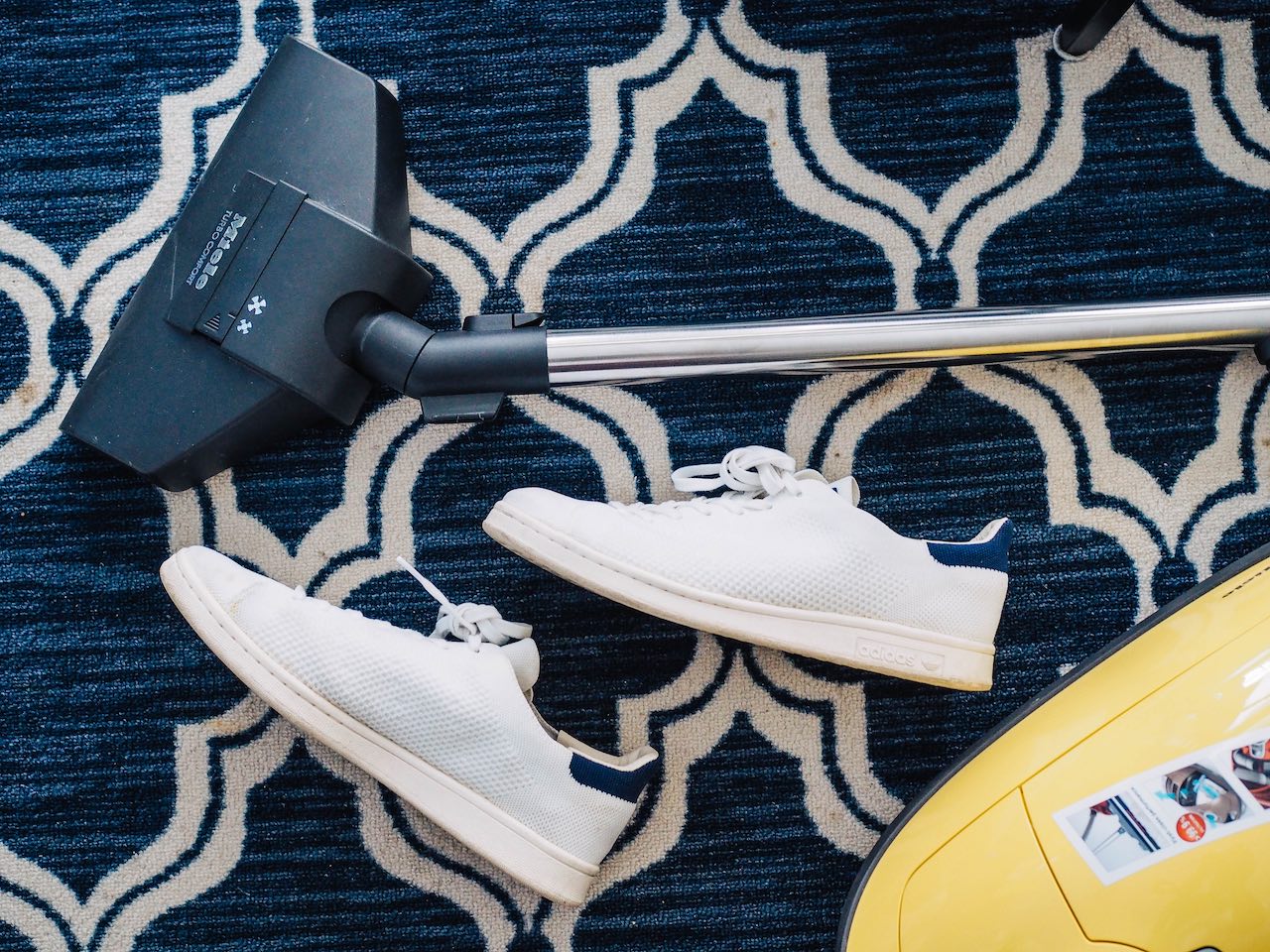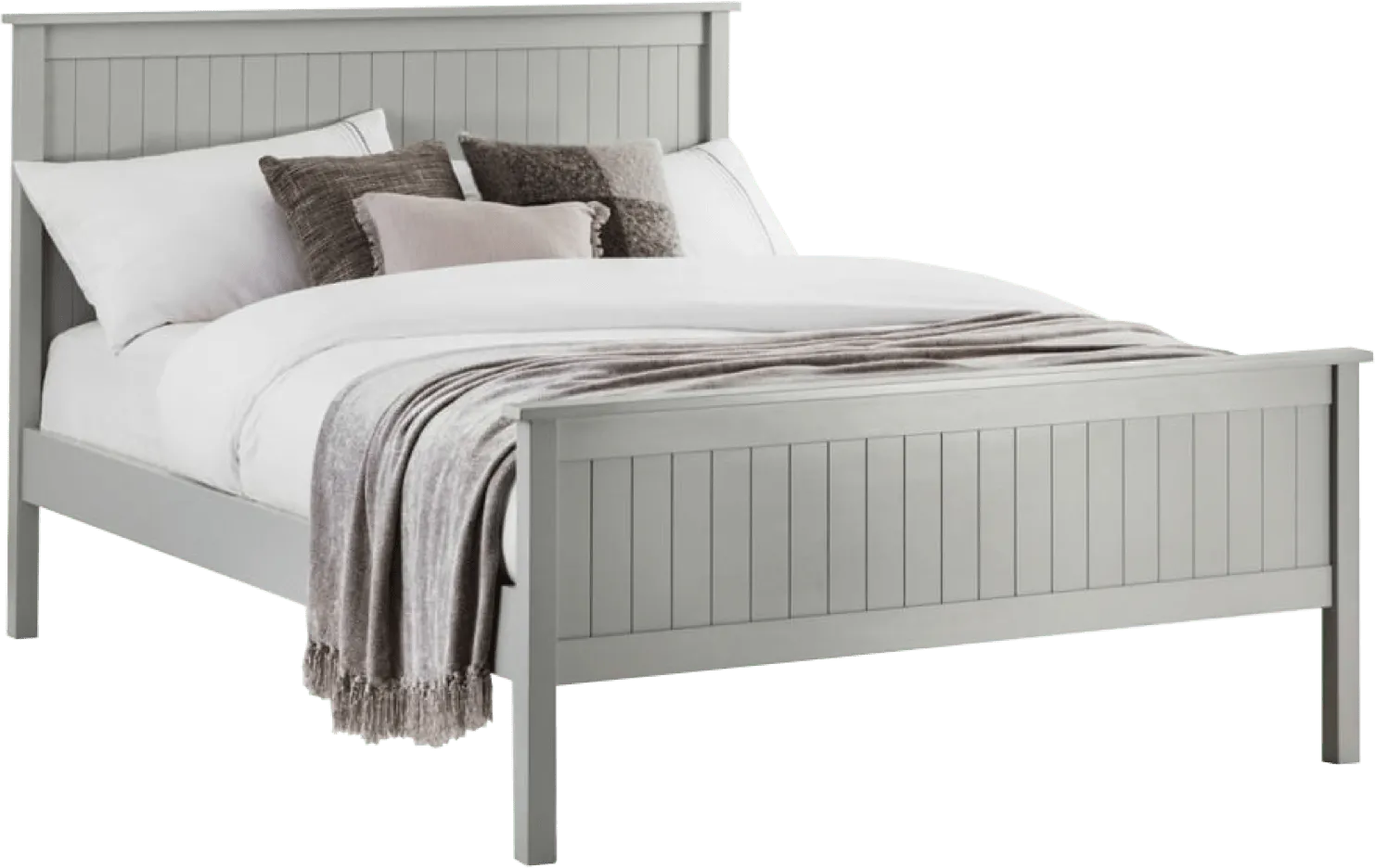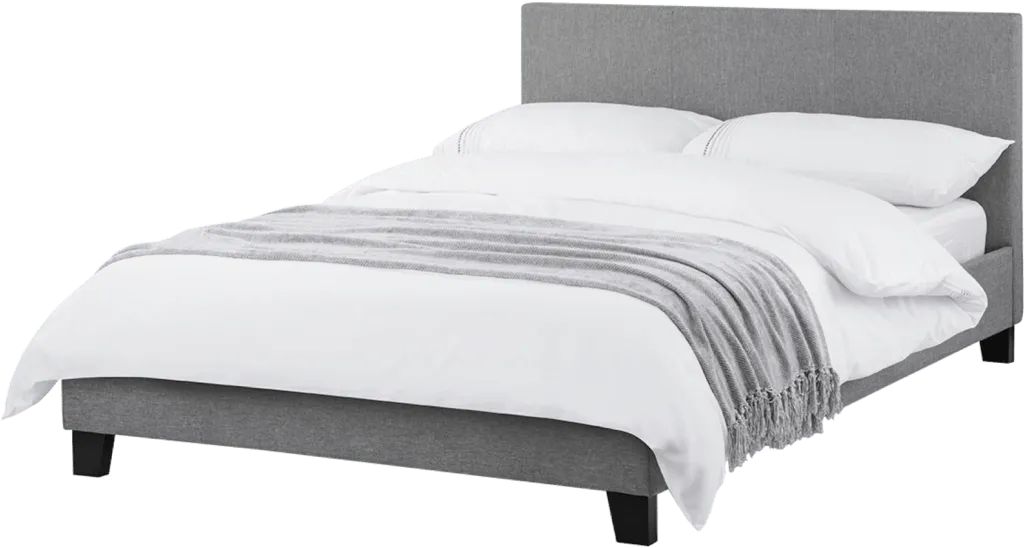Bed bugs and how to treat them
Bed Bugs are pests which can be found in any area of your home and can affect furniture, carpets, cracks in floors and of course mattresses. They are not a sign of dirt or bad hygiene as some may believe. More often than not they are hitchhikers that have found their way to your bedroom via various carriers and into your mattress.

These carriers could be old second-hand furniture, relic mattresses or even other people who unknowingly may transport them during travels. Hitching a ride on clothing, furniture or other upholstery. They are opportunistic creatures!
The UK is facing a bed bug epidemic, with widespread reports in the news and social media causing a frenzy. Reports of bed bugs being spotted on the London Underground in October this year made many panic, and now the question on everyone’s minds is how do I get rid of bed bugs?
In early October, it was reported that Paris had a major bed bug outbreak as many had travelled for fashion week. Some reports showed it was so bad that there were streets filled with discarded mattresses. It is believed that this outbreak has now spread to the UK through travellers, which has caused an uptake in the number of reports of bed bug infestations in the UK.
However, bed bugs in the UK aren’t something new. According to pest control experts Rentokil, there has been a 65% increase year-on-year in bedbug infestations in the UK. Reports tend to increase between August and September as they like the warmer weather. However, the warmer-than-usual October has meant that they have stuck around longer.
The increase in travel post-pandemic has also sought to increase the spread of bed bugs and the fact they are becoming more resilient to the insecticides used to kill them. With these pesky critters on the rise, we wanted to help put your mind at rest by detailing everything you need to know about bed bugs, how to prevent getting bed bugs and how to get rid of bed bugs. Read on to find out our top tips for getting rid of bed bugs.
- What are bed bugs?
- Where do bed bugs come from?
- How do I know if I have bed bugs?
- Physical signs of bed bugs
- How do I treat bed bug bites?
- Bed bug facts
- How do I prevent bed bugs?
- How to prevent a bed bug infestation in your home
- Bed bugs and pets
- How do I get rid of bed bugs UK?
- Is it time to replace your mattress?
What are bed bugs?
Bed bugs are small oval-shaped insects that tend to live on furniture or in bedding and mattresses. They’re usually a dark yellow, red or brow colour, and adult bed bugs are around 5mm long. Their bites often cause red, itchy spots to appear on the skin, but they do not usually cause other health problems.
Bedbugs can hide in all kinds of places, including mattresses, bed frames, bedding, clothing, furniture, behind pictures, under loose wallpaper, carpets, or in cracks in your skirting boards.
Bed bugs are nocturnal creatures, only coming out at night to feed, drawn to the warmth of human or animal bodies. Bed bugs can live up to a year without food, lying dormant and waiting for a food source.
Bed bugs can spread rapidly, with female adult bed bugs laying up to 10 eggs a day and 200-500 in their lifetime.

Where do bed bugs come from?
The question on many people’s minds is, “Where do bed bugs come from?”. It’s a common misconception that bed bugs only infest dirty homes. When people find they have bed bugs, they often feel ashamed, but there is no need to be; bed bugs can enter clean homes just as easily, too.
Bed bugs tend to enter homes through travel. They can be found in any environment where humans tend to be in large groups. Hotels are a very common place to come into contact with bed bugs due to the vast amount of people coming and going. It takes just one person to unknowingly bring a bed bug in on their luggage or clothing, and the room could get infested.
Frequent travellers are more at risk of bringing bed bugs into their homes. To prevent this from happening to you, make sure you check the bed you’re staying in thoroughly and around the room. Avoid putting your suitcase on the bed and try using the luggage racks provided instead.
Another common way bed bugs enter your home is through second-hand furniture. Before buying any used furniture, we suggest you give it a thorough examination and even consider cleaning it before bringing it into your home.
It’s important to remember that a bed bug infestation can happen to anyone in any home. It could be as simple as getting on a train and one transfers to your clothes, which can then be carried back to your home. With this in mind, there are a few things you can do which may help prevent bed bug infestations in your home.
How do I know if I have bed bugs?
Knowing if you have bed bugs is relatively simple by way of visually inspecting your mattress and bedding. To ascertain as to whether you do have bed bugs, you would find dark blood spots on sheets and bedding. This is because they feed at night, a bit like vampires. Crawling out from cracks and crevices in and around your bed. Bed bugs will sometimes excrete while they are feeding and this results in the dark reddish or brownish spots.
Bed bugs typically cluster together in out of the way areas but to determine as to whether you have these little pests, look on and around bases, mattresses, bed frames, in and around the tufts and buttons on the mattress. They are absolutely tiny and you’re more likely to see their exoskeletons which they shed as tiny brown scales. They can survive months without feeding which means they can survive in properties in between tenants which allows them to pass from carrier to carrier.
These insects are only about ¼’ and very flat so they can move into very tight corners and cracks. Please see image below:

An individual insect can lay between 200 and 250 eggs in its lifetime. The eggs hatch in about 6/10 days and the newly emerged bed bug nymphs seek a tasty meal, which sadly is either a feast from you or a pet! Adult bed bugs will live for about 4 months however they can survive without feeding for up to a month.
Physical signs of bed bugs include:
- Brown rusty coloured small stains on your mattress or bedding
- Shed skins in crevices, creases in upholstery or around the mattress edge
- A musty odour
- Itchy lumps or bite marks on people or pets
How do I treat bed bug bites?
Although these insects will bite you, they are not known to spread diseases, they are more of a nuisance causing an itchy red rash on your skin. It is advised that antihistamines can be used to reduce the itching but the best treatment is to stop bed bugs in their tracks and remove them from your bedroom.
You may see bites as track marks in the same places, this is because bedbugs are known to sequentially feed in the same spot. The bites themselves often come up as small lumps and the act of being bitten itself is painless. Most people only notice the bites a day or two afterwards as itchy spots. It’s key to spot these early so you can remove these bedbugs from your mattress and bedroom.
Although they can be uncomfortable, bed bug bites are not usually dangerous. They can get very itchy, and you may get painful swelling, but they should usually clear up on their own in about a week.
To help soothe bed bug bites, you could try:
- Putting something cool on it, like a cold compress or damp cloth
- Keep the affected area clean and apply a mild steroid cream like hydrocortisone
- Take antihistamines, as these can help ease the itching
If you find you have bed bug bites and need help treating them, the NHS has some useful advice.
Bed Bug Facts
- They can’t fly
- Feed exclusively on blood
- They can travel in other peoples luggage or furniture
- They can survive months without feeding – tenacious things!
- Bedroom clutter increases the risk of bedbugs making a home in your bedroom

How to prevent bed bugs?
To avoid bringing these unwanted pests into your home you’ll need to ensure that you take some minor precautions, particularly when travelling. There have been reports of increased bed bug infestations even in high-end hotels. It seems more a result of the increasing trend for people to travel more. The availability now of short-term holiday rental properties and locations with a high turnover of visitors has enabled bed bugs to thrive. Even cinemas have been known to house bed bugs in the upholstery of the seats.
A good rule of thumb is to check suitcases when you are travelling and before leaving the hotel to make sure nothing has crawled into the suitcase whilst on the floor. Alternatively, why not use the suitcase stand often found in hotel rooms to help elevate the suitcase?
They can also hitch a ride on clothing which often allows them to infest multiple rooms in a house. They really are savvy creatures!

Check second-hand furniture before bringing into the house which is often a carrier for the blighters. If the furniture can be washed down and cleaned then this can help. Upholstered furniture is harder to inspect, so make sure you check any creases in the fabric, stitching and the backs of say older second-hand headboards for signs of bed bugs.
- Remove and wash your bedding each week on a 60-degree wash
- Turn and rotate your mattress each month
- Air your room daily
- Vacuum the bedroom at least once a week
- Deep clean any second hand furniture you may bring into the bedroom
How to prevent a bed bug infestations in your home
Minimise clutter
Clutter in your bedroom, particularly around your bed, will make it easier for bedbugs to make a home in your bed. It allows them more places to hide out of sight and nest, so keeping a clean, tidy bedroom is important for preventing an infestation of bed bugs or any other kind of bug.
Keep your bedroom and mattress clean and hygienic
Good bedroom hygiene is incredibly important. Many people overlook cleaning their mattresses or cleaning their rooms often, which is strange considering we spend around 8 hours a day in there sleeping each night.
You should keep your mattress clean by vacuuming it monthly to remove dead skin, dust and dander, and flip, turn and rotate your mattress monthly if you have one that allows you to do so. Using a mattress protector can also help protect your mattress in the long run, preventing stains from sweat and other bodily fluids from getting onto it during the night.
Remember to clean underneath your bed, as this can be a breeding ground for dust, moisture and debris. Pull your bed out and clean underneath it regularly, and make sure you clean the bedframe and headboard often, too.

Wash your bedsheets regularly on a high-heat
The average person spends 7-9 hours a night in bed. Over a week that adds up to 49-63 hours where you’re lying on the same sheets. To make sure you keep your bed clean and hygienic, we recommend washing your bedding on a 60-degree long wash every 7 days.
For more detailed information on how to clean your bedsheets, mattress and bedroom effectively, read our “Bedsheets and the best temperature to kill bugs” blog.
Be careful when travelling
When travelling, be extra vigilant of bed bugs. Thoroughly check the bed, mattress, sheets and room you’re staying in for traces of bed bugs before sleeping in it. Try to keep your suitcase off the bed and store it on the luggage rack provided in the room or away from the bed if there isn’t one available. Using hard-cased luggage can help, too, as it’s harder for bed bugs to latch onto the hard casing than it is for them to get into fibres.
When returning home after travelling, we suggest removing all your clothes from your suitcase outside your bedroom, preferably on a hard floor and putting them straight on a hot wash (60C). Then inspect your suitcase for signs of bed bugs and vacuum and clean it thoroughly.

Bed bugs and pets
Though bed bugs will feed on pets, they do not live or travel on the skin of their hosts, and pets are not believed to be a factor in their spread. If pets are allowed to sleep on your bed it may be worthwhile checking them for any bites also checking their bedding too.

How to get rid of bed bugs UK?
If you have come across any signs that you may have bed bugs, you’re probably thinking, how do I get rid of bed bugs? The best thing to do is take action immediately. In the UK, you can contact your local council, who may be able to help and treat your home for free. Alternatively, you can consult a pest control company that is a member of the British Pest Control Association.
It is highly recommended to contact a professional Pest Control Company. They will need to make a detailed survey of the property to check as to where the insects have become a problem.
Most Pest Control Companies will use a heat treatment which requires specialised equipment to raise the temperature in specific areas to 118’F and that will need to be maintained for about 70 minutes. All bed bugs should have been killed if this treatment has been performed properly.
Clutter is also a great hiding place for bed bugs. Another tip is to try and reduce the amount of bedroom clutter and hiding places for them. Regular mattress maintenance will also aid in the prevention or early identification of any unwanted visitors.
It’s best to consult the experts as bed bugs are notoriously hard to get rid of yourself, and they are even becoming immune to many of the insecticides used to exterminate them, which is part of the reason infestations have increased in recent years. We’d always advise that you get professional help to get rid of bed bugs if you think you have an infestation, but here are a few things that could help if you do want to try yourself.
Strip your bed and wash all bedding on a high-heat
As previously mentioned, strip all bedding and any soft furnishings, soft toys, pyjamas and clothes around the affected area and wash them on a 60-degree long wash. This should kill all bed bugs and eggs within them. Follow this by high-temperature drying in a tumble dryer, if possible.
You could also place bagged-up laundry in the freezer for three days, as this can also help kill off the pests.
Vacuum your mattress
After stripping your bed, vacuum your mattress, bedframe, headboard and floor in your bedroom thoroughly to remove any bed bugs within the bed and mattress. Vacuuming your mattress and bed is something you should do regularly anyway. Focus on getting into all the seams, folds and crevices of your mattress.
Once you’ve finished vacuuming, throw away the contents of the vacuum into a sealed bag immediately, and put this in a bin outside your home. Bed bugs can live inside the vacuum bag, so it’s crucial you dispose of this properly and immediately.

Steam clean
Many experts agree that very hot temperatures and steam cleaning can instantly kill bed bugs. Using an upholstery-safe steam cleaner on your mattress or furniture can help clean and kill the bed bugs. Steam slowly and make sure you cover all areas of the bedding and mattress, bed frame and headboard.
Treat the area with a bed bug spray
There are many different bed bug sprays on the market. After thoroughly cleaning your mattress or furniture, you can use a bed bug spray on it to kill off any remaining bugs and prevent another infestation. Spray the mattress thoroughly, ensuring your room is well-ventilated and leave it to work based on the instructions on the bottle. Always ensure you read the label and follow the instructions when using an insecticide spray.
It may sound obvious, but bedroom hygiene, cleanliness and proper mattress care can really make all the difference. For more details on how to properly care for your mattress to ensure it lasts as long as possible and remains clean, read our mattress care maintenance guide.

Is it time to replace your mattress?
Heavily infested-mattresses may have to be thrown away. Often, even when their mattress and bed have been treated, people find it hard to sleep on it as it was once infested, and they worry it may still be. If you’re losing sleep at night over your mattress, it could be time to replace it with a new one.
As long as your bed bug infestation has been treated effectively, and you’re sure that they have all been exterminated, it should be safe to replace your mattress. Don’t put a new mattress on your bed or bring it into the house until you’ve fully treated a bed bug infestation, as this could just lead to your new mattress also becoming infested.
At John Ryan by Design, we are experts in mattresses. We’ve written many guides for how to choose the perfect mattress and what the best quality mattress components are.
So, if you are looking to update your old mattress and find a mattress that works for you, helping you to achieve the perfect night’s sleep, get in touch with a member of our friendly team today. We’re more than happy to help!

It’s never the nicest subject talking about bed bugs or other creepie crawlies, especially in your bedroom. However, we have detailed why you may end up with bed bugs. Mainly as opportunistic hitchhikers who accidentally end up in your home. Clearing clutter in the bedroom and ensuring you check furniture regularly are the best means of control. If you’re buying second-hand furniture a quick inspection of the seams for the telltale signs can help reduce potential bed bug infestations. The same goes for hotel stays with your luggage. If you do end up with these unwanted guests we always recommend hiring the professionals.
Do you have questions about mattress care and maintenance? Wanting to swap your old uncomfortable mattress for a more suitable new mattress? Then why not get in touch with our friendly team of experts on 0161 437 4419. You can also browse our online shop of handmade luxury mattresses.


Ask us a question.
There are over 6000 questions and answers submitted by you on all questions about mattresses and bed problems. Enter a keyword such as Vi Spring, John Lewis beds, bad back or Memory Foam and see if your question has already been answered.
You can filter popular questions by the categories below. If you can’t find an answer, ask a new question below. We aim to respond to all questions within one working day.




































 Mattresses
Mattresses  Take our mattress quiz
Take our mattress quiz  Contact
Contact  About us
About us 


